Cedar: what it looks like, grows and blooms, how to grow it?
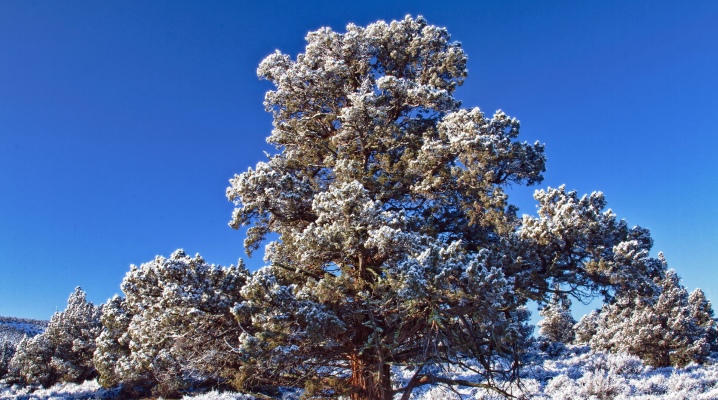
Cedar is a rare guest in the Central Russian open spaces, which is why questions often arise about how a tree looks and what features it has. But in the field of landscape design, this coniferous giant has practically no competitors - its majesty attracts attention and allows you to set the tone for the entire composition. The Lebanese cedars mentioned in ancient manuscripts, the relict cedars of the Crimea and the unique high-mountain groves of the Himalayas - all of them managed to become real attractions and today attract thousands of tourists to their places of growth.
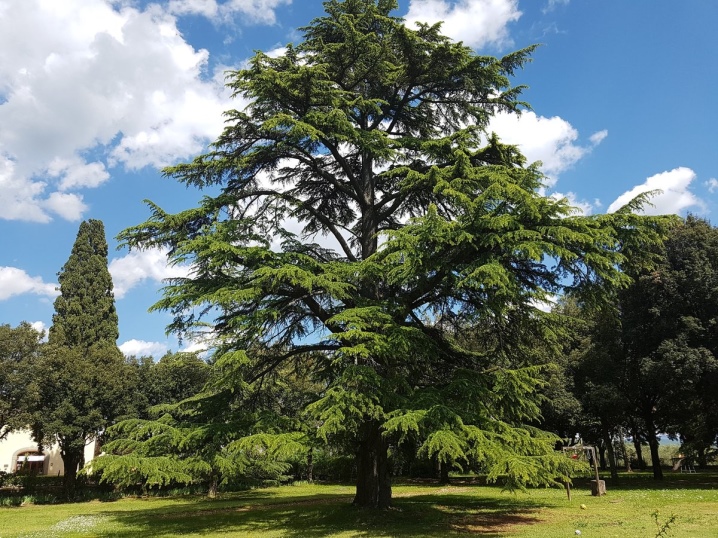
Before deciding to buy a seedling from a nursery, it is worthwhile to study the features of this unique plant in as much detail as possible. Only in this case the tree will feel good and will become a true decoration of the site.
What does it look like?
The evergreen cedar tree belongs to the Pinaceae family, the genus Cedrus, and is a real record holder among long-livers. On average, a tree lives from 500 to 1000 years, reaching a height of about 40-50 m. The maximum height is already reached by an adult plant; in the absence of favorable conditions for growth, it remains rather short. The root system of a tree, according to the botanical description, largely depends on the type of soil and growing conditions. Cedar quite easily adapts to different viscosity and looseness of the base on which it grows. It forms a branched surface system that allows the plant to get enough nutrition. But such an unreliable foundation makes these gigantic trees prone to windblows, so they are best planted in areas protected from the influence of winds.
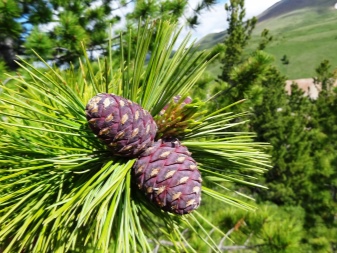
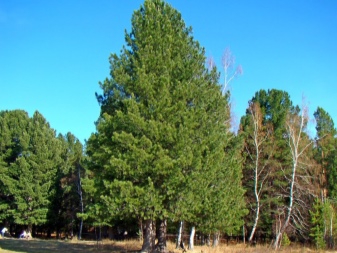
The growth rate per year largely depends on the age of the tree. It can be up to 100% in young trees and even exceed this figure. So, a seedling 15 cm tall, under favorable conditions, gives a spring and autumn growth in total up to 30 cm per year. Mature trees add no more than 20 cm on average.
The description of the trees of the cedar genus indicates that they belong to oligotypic plants, that is, they do not have a large species diversity. The appearance is also quite uniform. The coniferous tree has a spreading lush crown with branches abundantly forming side shoots. At first, its shape is pyramidal, then it takes the form of an umbrella. The trunks of young cedars are always smooth, with a rich gray bark; in an adult plant, it becomes fissured, acquires a scaly structure. On some branches there are both long and short shoots, on elongated needles are located in a spiral.
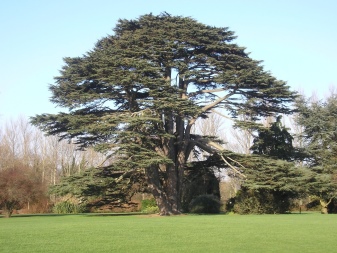

Cedar needles are in the shape of a trihedron or tetrahedron, rather rigid and dense, pointed at the ends. The color depends on the species - there are trees with blue-green, gray-gray and dark green needles. The needles grow in bundles of 5-30 pieces, the exact number depends on the species. Cedar belongs to monoecious plants that form both female and male inflorescences.
Where does it grow?
In the Moscow region, Siberia and other regions of Russia located north of the subtropical climatic zone, cedars do not survive due to prolonged frosts. But they do well in the conditions of the Central Black Earth Region. So, in the reserves of the Caucasus, relict trees are found in the composition of mixed forests... In the wild, they can be found on the territory of the southern coast of Crimea, where even in winter the minimum temperature values do not reach -25 degrees Celsius. On the territory of Ukraine, cedars can be seen in Odessa and near other cities on the Black Sea coast.


In their natural conditions, these representatives of the pine family are found in the mountainous regions of the Mediterranean, as well as on the slopes of the Himalayas on the western side. Short-coniferous varieties of the Lebanese cedar grow in Turkey and Cyprus.
How does it bloom?
Cedar blooms in autumn. During this period, female and male spikelets are formed on its branches. Their location is always solitary. Male ones in the form of tall candles, arranged vertically, single, with bunches of needles around. Womens, up to 5 cm long, are decorated with many stamens arranged in a spiral. Pollination takes place with the help of the wind and does not require insects.
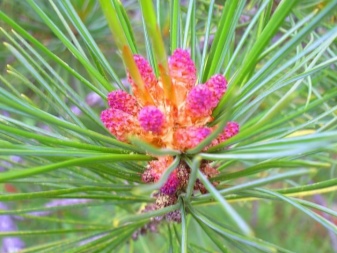
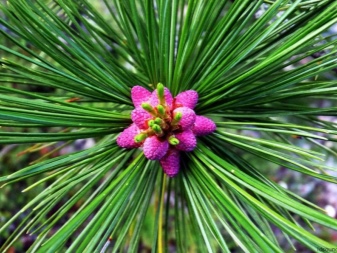
At what age does it bear fruit?
Cones appear at a fairly mature age. The first fruits of the cedar are not earlier than 25 years. As long as the tree is growing rapidly, it does not bear fruit. From the moment of reaching maturity, barrel-shaped cones appear on the branches twice a year. You have to wait a long time for seed material. The cone ripens for 2-3 years, the tree sheds its fruits gradually and only in the autumn-winter period. The fruits of plants of the genus Cedrus are inedible, rich in resin. Like other conifers, the seed is equipped with a lionfish; the length of the fruit itself does not exceed 15-17 mm.
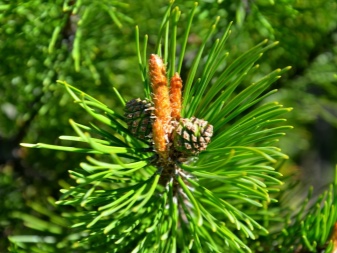
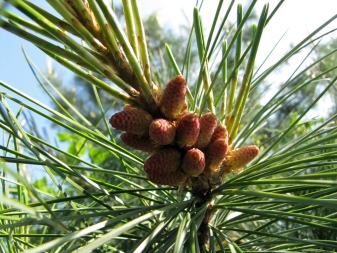
Life span
The lifespan of a cedar depends on the conditions of its growth. For example, in its homeland in Libya, the Lebanese species lives for several thousand years, and when cultivated in the Russian south - no more than 80 years. The needles on the tree also have their own characteristics - its life span is 3-6 years, partial renewal annually reaches 15-20% of the total crown volume.
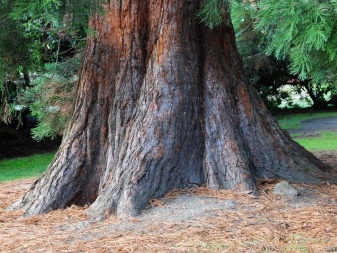
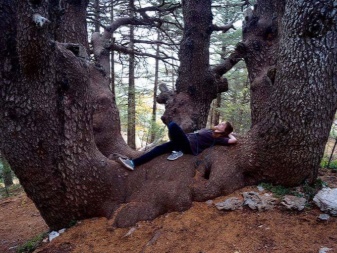
Species overview
Real cedars belong to the category of heat-loving plants that are not common north of the subtropics. They do not grow in temperate climates. A those trees that are commonly called cedars in Russia belong to the cedar pine... In addition, the European, Korean variety and cedar are also included here. Spanish, Alaskan yellow, Canadian red and oriental red cedar are not related to the cedar genus - they all represent other genera of conifers, from pine to juniper and thuja.

A total of 4 species are included in the genus Cedrus. Among them are the well-known conifers, as well as plants found in certain areas and endangered.
Lebanese cedar
The most famous species of cedar, in the wild today, threatened with extinction. In Lebanon, Cedrus libani grows in the mountains at an altitude of 1000-2000 m. Today, there are 6 preserved groves where this tree can be observed in its natural habitat. They form the Khorsh-Arz-el-Rab forest or the Divine Forest, which is under the protection of UNESCO. Its visit is strictly limited and requires special permission.
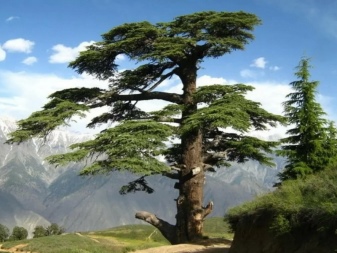
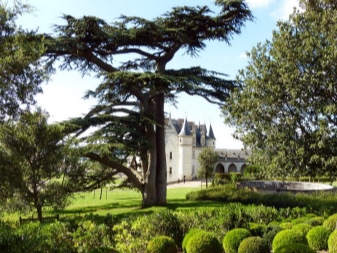
In cultivated breeding, it has been found since 1683. The first planted specimens are still preserved in the south of France and in Italy. Today, the view is widely used by European designers in landscape design. The Lebanese cedar also takes root well on the territory of Russia - in the Black Sea region, the Caucasus mountains, in the Crimea, it is actively grown in Central Asia. The leaves, more precisely, the needles of the tree are elongated, up to 3.5 cm, it changes once every 2 years. Shoots form a branched crown, conical in young trees and umbrella-shaped in mature trees. The maximum trunk height is 50 m, its girth reaches 2.5 m. Outside the natural conditions of growth, stunted forms are most often found.
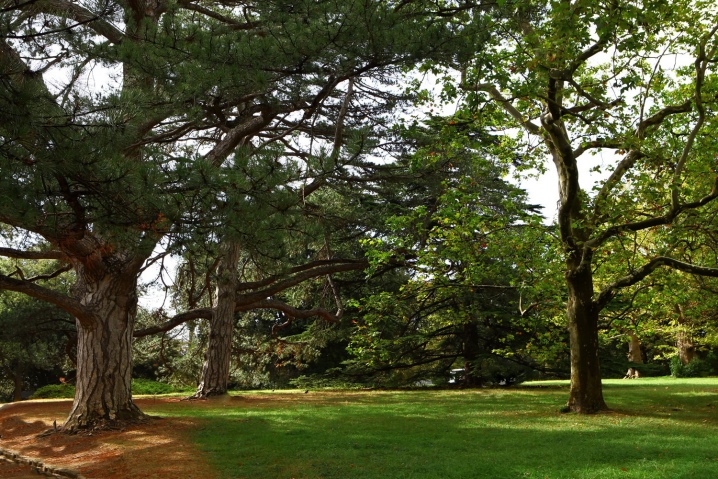
The Lebanese cedar has 2 subtypes - main and Turkish (or Ararat), growing on the slopes of the Taurus Mountains. In addition, there are many cultivated ornamental varieties distinguished by their small growth.
- Glauca. A form with weeping shoots of a bluish-gray hue. Very decorative, popular with landscape designers.
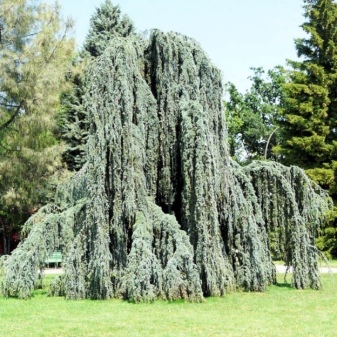
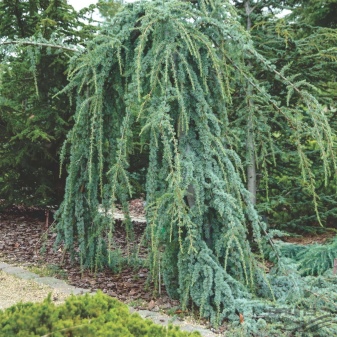
- Sargentii. Woody semi-dwarf form, distinguished by elongated weeping shoots. The variety is characterized by very slow growth, by the age of 10, its height rarely exceeds 1 m. This form of Lebanese cedar is suitable for growing in shaded areas.
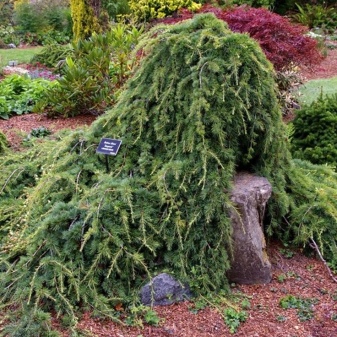
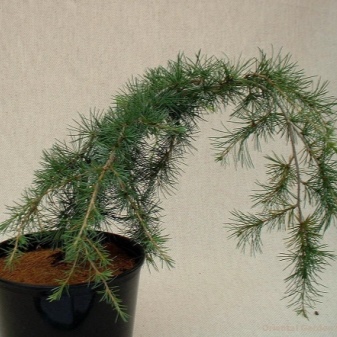
- Var stenocoma. A tree with a straight trunk and a conical compact crown, has a great similarity to spruce, grows up to 3 m. Shoots grow upward, the needles are dense, dark green in color. The variety is suitable for single and group planting.
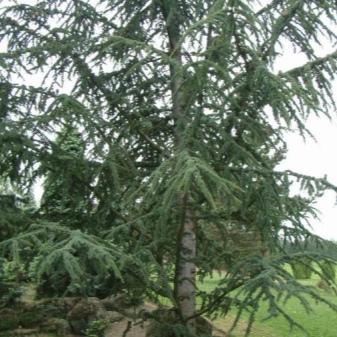

- Nana. Shrub form of the Lebanese cedar with asymmetrical wide shoots. It is characterized by slow growth, the maximum achievable crown height is about 90 cm. The needles have a deep green color.

- Beacon Hill. Dwarf Lebanese cedar with weeping branches and decorative golden bark. This form is photophilous, needs a lot of sun. The needles are elegant, bright green, the crown looks like a narrow cone.
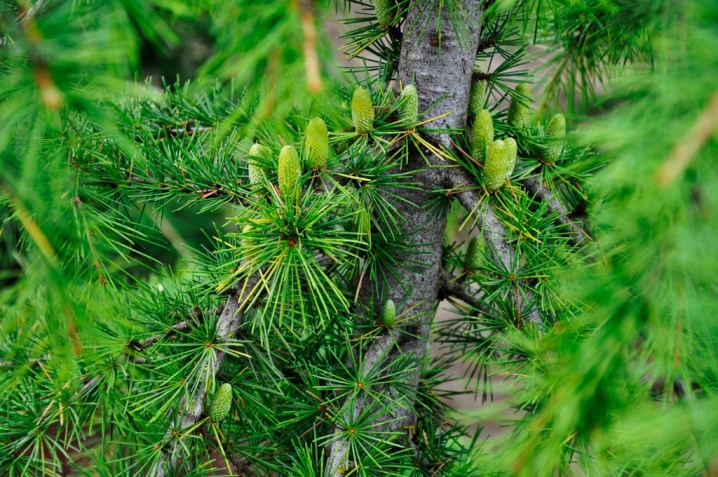
All ornamental forms are not fruit-bearing plants; growing them from seeds is not possible.
Cypriot or short-coniferous cedar
A species that grows exclusively in Cyprus and in some parts of Turkey. One of the shortest forms. The height of the trunk of an adult plant reaches 12 m, while the girth of the trunk remains common with other subspecies, up to 2 m. Short needles grow to 5-8 mm, in combination with raised branches, forms a lush umbrella crown. The Cyprus cedar is recognized as a vulnerable species and is on the verge of extinction. The wild population was almost completely exterminated by the efforts of humans, who used wood for various needs. According to some reports, the short-coniferous cedar is a subspecies of the Lebanese. But this opinion is not shared by all botanists.

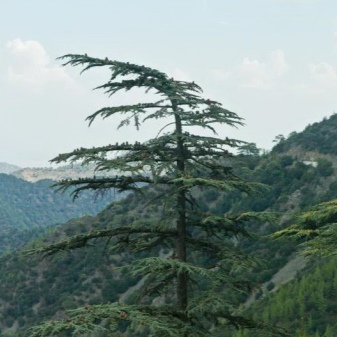
Deodar
One of the most common species is the Himalayan cedar, which grows in the mountainous regions of the northwestern part of the Himalayas, and is found everywhere from Nepal to Afghanistan. The tree is able to feel good even at an altitude of up to 3600 m above sea level, it is characterized by increased frost resistance. As part of mixed forests, it gets along well with fir, spruce, pines of various types. The Himalayan cedar is a real giant, the girth of its trunk reaches 3 m, and it reaches 50 m in height. The crown of the tree has a conical shape with horizontally spreading shoots, has a gray-green color with a pronounced bluish bloom. The needles are elongated, up to 5 cm, growing in bundles of 30-40 pieces, rather soft. Cones ripen faster than other cedar species, after 1-1.5 years they are turned up on the branches, and do not hang down, like in other conifers.
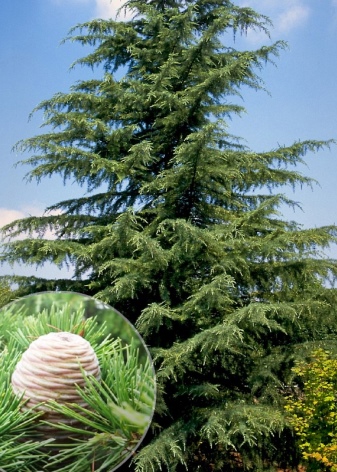
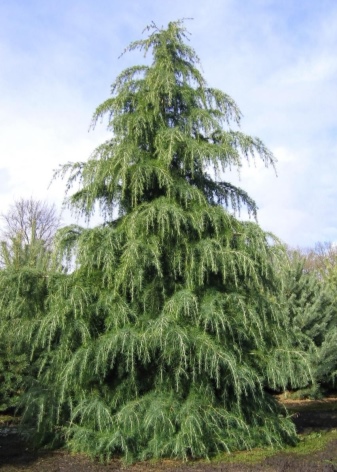
A distinctive feature of the Himalayan cedar can be called resistance to shading and a significant life expectancy - on average from 1000 to 3000 years. The species is suitable for cultivation for landscaping purposes, used in landscape design. Under favorable conditions, it takes root well in the Crimea, the countries of Eastern Europe. High decorativeness makes this tree an excellent choice for decorating the site.
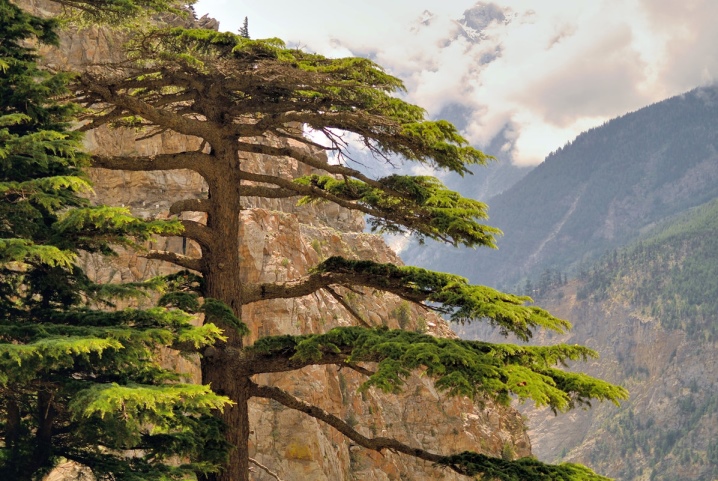
Atlas cedar
This species grows in Algeria and Morocco, in Northwest Africa, in the Atlas Mountains. Atlas cedar is one of the rare species of vegetation that can grow on depleted rocky soils. The tree is found at an altitude of more than 1300 m above sea level. It is characterized by a sprawling crown with a blue-green tint, emitting a resinous aroma, the wood is also abundantly saturated with natural essential oils.
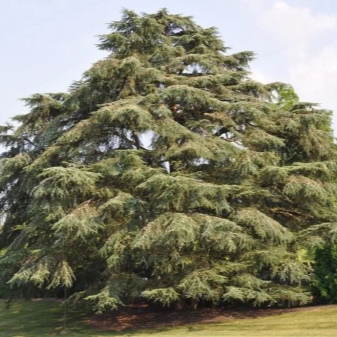
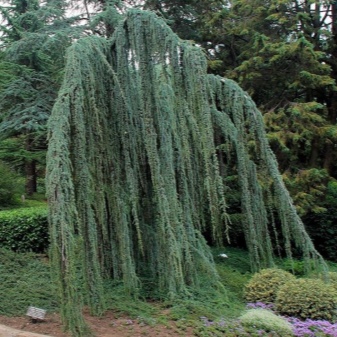
Atlas cedar grows up to 50 m in height, the diameter of the trunk of an adult tree reaches 2 m. This species is easier than Lebanese, tolerates drought, is able to be content with minimal amounts of incoming moisture. It should be added that frosts below -20 degrees are contraindicated for the Atlas cedar; when the temperature drops, it dies. This species is suitable for landscape design; it is successfully grown by gardeners in the south of Europe, in China, in Central Asia and in the Caucasus mountains. The decorative weeping species of the Atlas cedar, rooting well in the climate of the Crimea, is grafted.
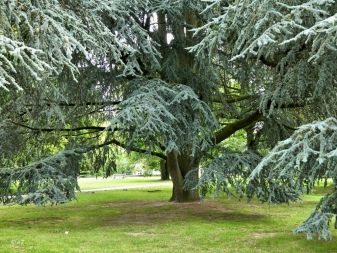
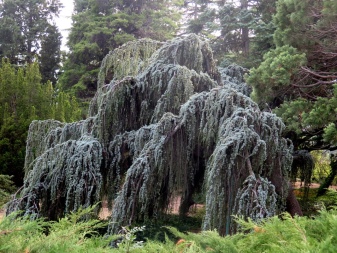
Seat selection
To choose the right place for planting cedar, you need to take into account the special needs of this plant for lighting and soil quality. In the summer, all species, except for the Himalayan, need additional watering, but most of the year the tree needs only light soil moistening without waterlogging and stagnant water. The best choice would be a well-lit area on a hill. Light is generally very important for the proper growth and development of both common, wild and cultivated breeds.

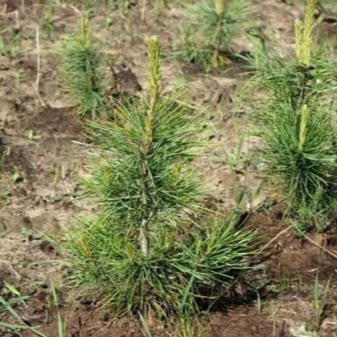
The soil must also meet the needs of the seedling. It is good if the site is dominated by loam, well-drained, allowing moisture and air to pass to the roots. Fully open areas that are blown by the wind are not suitable for growing cedar. In this case, a strong gust may simply pull the young tree out of the ground. Trees do not grow on dry soil with a high lime content, as there is a high risk of death due to chlorosis.
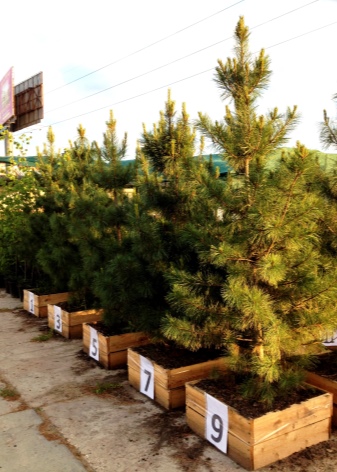
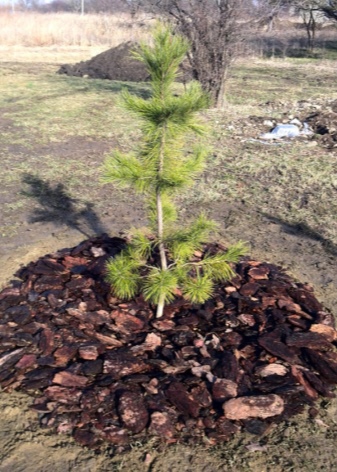
When planting in groups, young cedars are usually arranged in clumps, thus protecting the plants from negative external influences. In this case, a distance of 2 m between individual trees must be respected. This is due to the superficial type of the root system, in which it takes on a branched appearance and grows strongly. Do not place young cedars in the immediate vicinity of weeping trees, mature birches or aspens. In strong winds, the branches of these deciduous trees can break the seedling. From houses and other buildings with a foundation, cedars, especially non-dwarf forms, are located at a distance of 3 m or more, since there is a high risk that the overgrown roots of an adult tree will begin to destroy buildings.
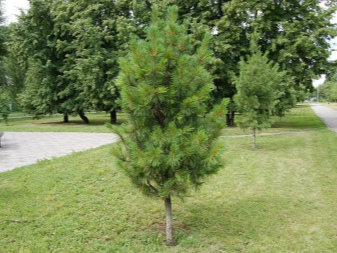

Planting tips
When placing cedars on the site, the method of planting on a soil cone is used - this increases the likelihood of survival and greatly facilitates subsequent care. The first step is to prepare a seedling pit - it should be at least 1 m deep with a diameter 50% larger than the dimensions of the container and the earthen ball. At the bottom, drainage with a height of about 10 cm must be laid, consisting of pebbles, broken brick, expanded clay. A sand pillow is laid on top. As a soil mixture, removed sod with sand, combined in equal proportions, is used. To improve growth, a layer of mature, well-rotted compost can be placed on the bottom of the pit.


Further, the sequence of actions will be as follows.
- Around the pit, within a radius of 1.5 m from its center, the soil is loosened to a depth of 2 shovel bayonets.
- In the center, you need to pour soil with a slide to get a cone with an elevation. A seedling freed from the container is placed on top of it. Its roots are straightened, should freely fall down the slope.
- The pit is covered with soil 10 cm above the root collar of the plant. This is due to the natural shrinkage of the soil. This approach will avoid exposing the roots.
- The soil around the trunk is carefully compacted by hand. From above it is covered with leaf mulch to maintain sufficient soil moisture.
- The planted cedar must be watered. A seedling contains 9-10 liters of water, with dry soil this amount doubles. In the absence of rain for the first month, the moisture supply will have to be regulated independently. Watering will be needed every 3 days.
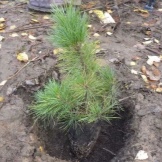
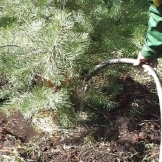
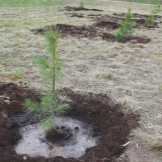
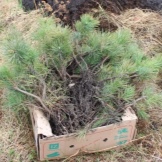
The best time to plant cedar is early autumn, from mid-September to the second decade of October.It is imperative that you have time to carry out the procedure before the average night temperatures drop below 0 degrees. The choice of a seedling also needs to be given great attention. It is optimal to purchase plants at least 7-9 years old. They have a well-developed root system, are not so demanding on the level of lighting on the site, they can withstand partial shade.
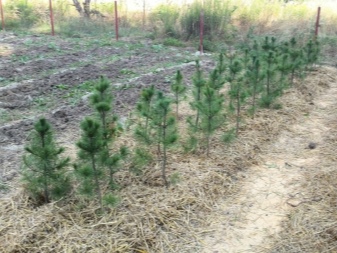
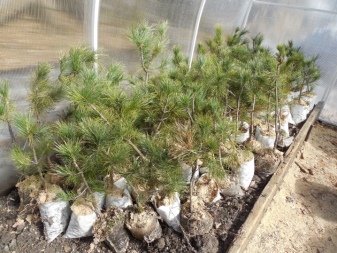
Care features
Young cedars require intensive care as they grow, otherwise it will not be possible to grow a strong and beautiful tree on the site. Top dressing, pruning, and fungicide treatment of the plant are carried out periodically. Starting to grow a seedling in the open field in the country or in a container at home, you should carefully monitor the soil moisture. Taking care of an adult cedar will no longer have to be so intense.

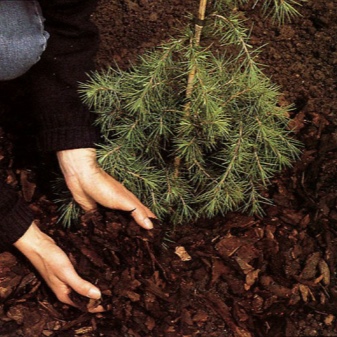
While the trees are young, they can branch, give additional root shoots. If you want to ensure normal growth of the cedar, it is necessary to cut the second trunk as soon as possible. An exception is shrub forms formed by grafting. They can have quite intense branching. Here, as a care measure, cutting off the lower branches can be used to avoid their contact with the soil and rot.
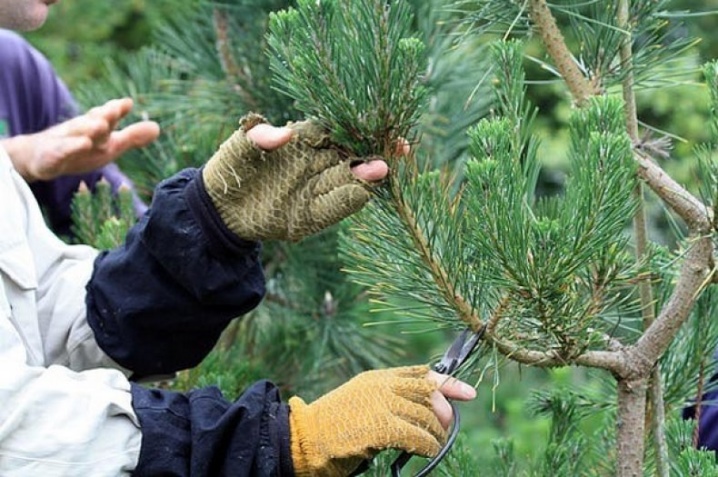
Most cedar species are not too demanding on the level of moisture, they tolerate dry periods well. Frequent watering is required only for young trees in the first month after planting, as well as in extreme heat. After the introduction of moisture, the soil is necessarily loosened - this improves the nutrition of the roots, ensures the prevention of root rot and the laying of larvae by insects.
At home, in container growing, young cedars are provided with:
- intense hydration;
- maintaining a constant temperature regime;
- protection from drafts;
- increased watering in spring and summer, light shading;
- sprinkling with a sprayer;
- application of organic fertilizers in spring and autumn.
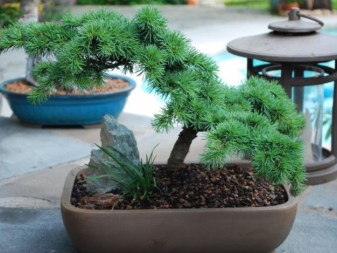
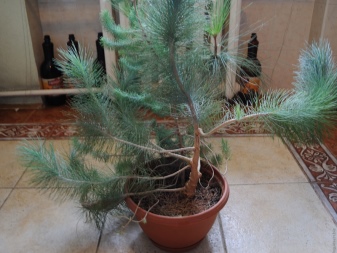
In home cultivation, decorative cedar forms are planted in ceramic pots. A mixture of turf, sand and humus is used as a substrate. A half-root transplant is performed every 5 years.
Crown formation
Pruning of cedars planted in the summer cottage is carried out mainly for sanitary purposes. This may concern the formation of 2 trunks. For pruning, a less developed shoot is selected, it is removed as low as possible, the cut is treated with garden pitch. The crown of a tree is formed by itself and can change over time - from a pyramidal to an umbrella. In the course of sanitary pruning in spring, dried and dead shoots are removed. Broken branches, as well as parts affected by fungi or diseases, are pruned throughout the season. The rest are removed only during the period of slow sap flow. If the tree is grown in a pot, it must be pinched in the spring, removing young shoots. This work is carried out manually without the use of additional tools.

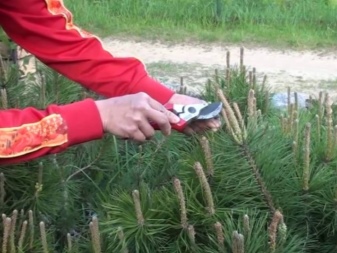
How to feed?
It is recommended to feed the cedar with complex potash or phosphorus fertilizers. Among the suitable options can be noted funds "Agricola", "Kemira". They are brought into the ground dissolved in water. You can also place the granules inside the loosened soil before watering. Top dressing times throughout the year are in May, July and September. Conifers do not need nitrogen fertilization. Ammonium nitrate, urea, herbal infusions or manure can severely damage the root system. Of organic fertilizers, only high-quality humus is shown.
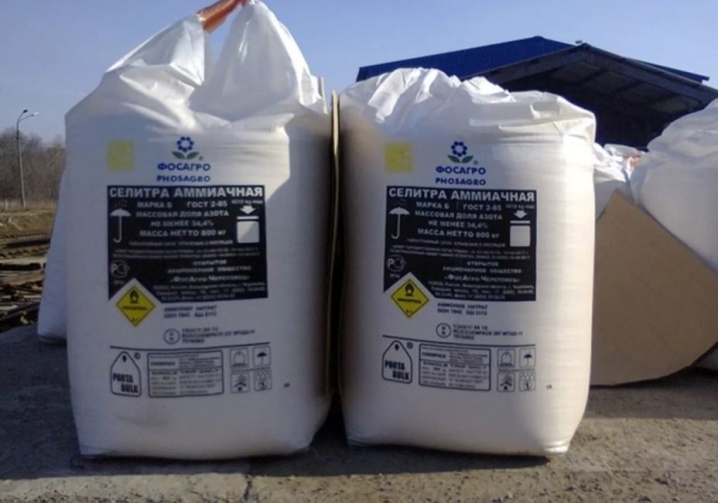
Reproduction
Reproduction of cedars suitable for cultivation in the subtropical zone in Russia - Lebanese, Himalayan, Atlas, is fraught with certain difficulties. If we are talking about ornamental species, the seed method will not be available at all. These forms reproduce by grafting on Scots pine.But the seeds of a wild cedar can be germinated, and the tree itself can be propagated by cuttings, if there is access to planting material.
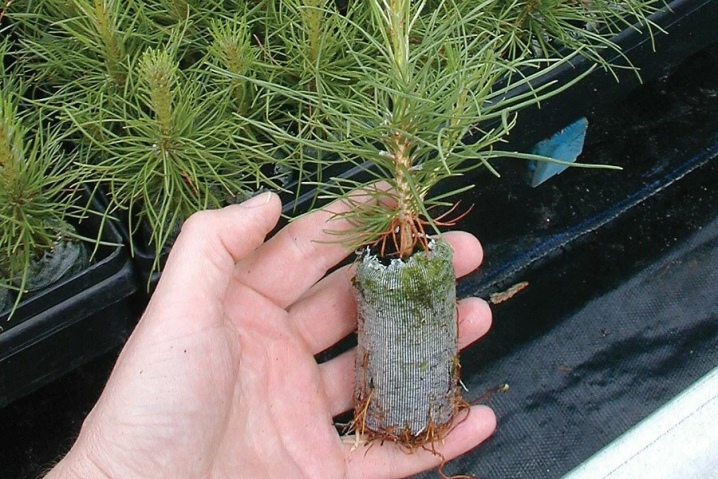
Cuttings
When self-propagating by cuttings, you need to have access to an adult plant. The optimal period for cutting shoots is from the beginning of April to the first ten days of May. During this period, active sap flow begins. Cutting is best done in the early morning in cool weather. Shoots 5 to 15 cm long are suitable for cultivation with transplantation in the fall. It is necessary to separate them from the tree without the help of tools, manually, then a part of the bark of the mother tree will remain on the cuttings. It is better to choose a mother plant or a donor plant among young cedars about 8-9 years old. In ten-year-old plants, cuttings take root with lower rates of successful survival.
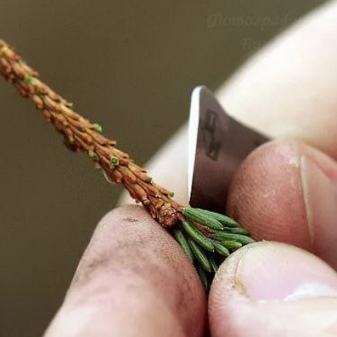
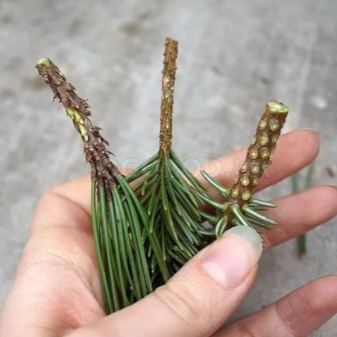
It is important to consider that by cutting off the shoots from the center of the crown, you can get a taller, upward tree. Lateral branches will later give a plant with a lush crown and a lower trunk height. Before planting in the greenhouse, the cuttings are stored in a plastic bag filled with moist moss at temperatures up to +2 degrees. The maximum shelf life is 7 days.
During this period, a place is being prepared for the cuttings. Before placing them in open ground, the sections are treated with powder growth stimulants. It is impossible to place future seedlings in water, otherwise the bark may flake off. In the greenhouse, boxes with loose soil consisting of high peat, land from coniferous forest, sand in equal proportions are prepared for the material. Holes are dug in the soil at a distance of about 10 cm. The depth of planting of cuttings is 3-5 cm, the place around the run is covered with earth, compacted. Watering is carried out by drip irrigation, then the seedlings are shaded, left in the greenhouse. The temperature of the substrate and air should be kept at + 22-24 degrees. During the rooting period, the soil is treated with a mixture of growth stimulants and fungicides.
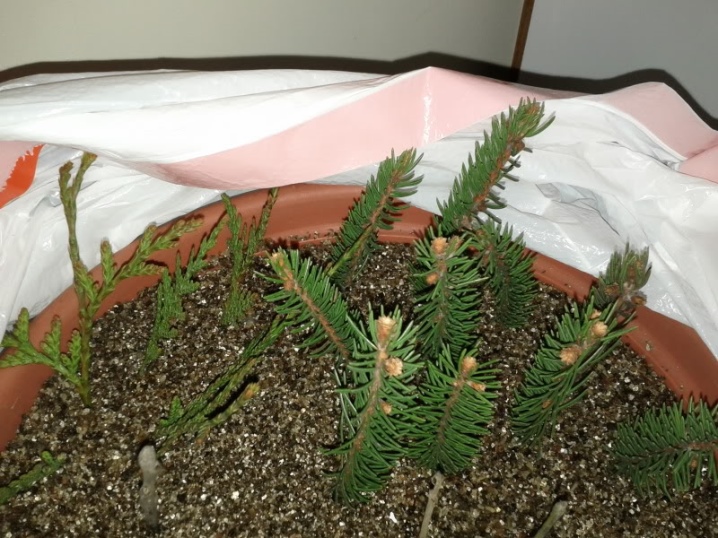
Growing from seeds
This method is used to obtain plants for home growing. Before being placed in containers, seeds must be soaked in warm water for 24 hours, after adding a growth stimulator in the amount of 2-3 drops to it. The planting material prepared in this way is buried in a well-loosened substrate and placed in a place with a temperature of about +4 degrees. The mass is mixed and loosened every 2 weeks, the surface of the container with seeds is moistened with a spray bottle. As soon as the seedlings hatch, the container is transferred to a well-lit place. If a common container was originally used, then the shoots are planted in separate containers.
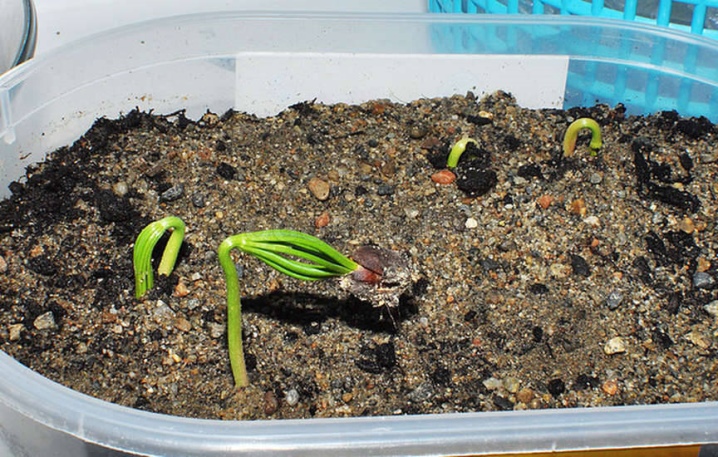
Diseases and pests
Among the dangerous pests that infect cedar, several insects and pathogens can be noted.
- Pine cone moth. This butterfly lays eggs, from which very voracious larvae emerge. The tree can be protected by spraying with Leptocid at the beginning of flowering and repeating it after 7 days.

- Root sponge. This fungus attacks the roots of the tree, disrupts the nutrition of the trunk and can completely destroy the plant within several years. If a tree is affected, it is important to prevent the spread of the pathogenic effect to adjacent trunks.
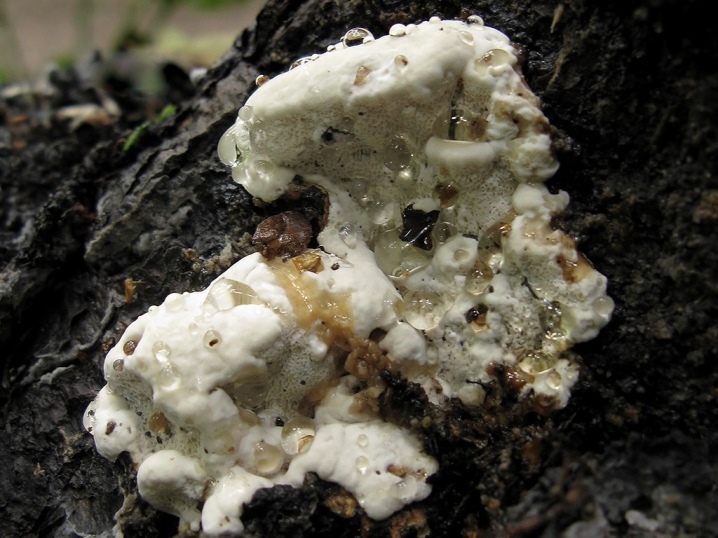
- Sawfly. This pest belongs to the group of bark beetles. He lays eggs in the thickness of the wood, later the larvae begin to gnaw their way out. This process lasts for years and, as a result, can even destroy an adult tree. As a control measure, a fungicidal treatment is recommended.

- Rust. This fungal disease affects the surface of the needles and at an early stage looks like yellow blisters. The fungus is especially active in conditions of high humidity and temperature. The disease can be spread by spores from nearby weeds. A preventive measure is regular weeding of the area around the tree.
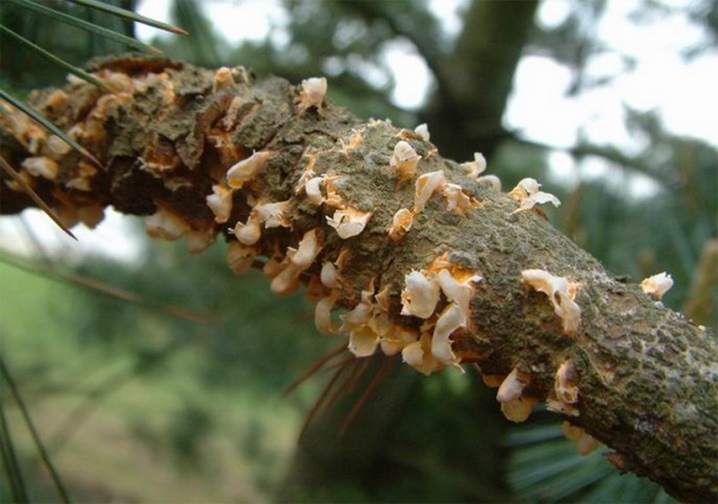
- Resin cancer. This disease develops for the second time against the background of rust, affects the bark, bast and other parts of the tree. The disease is dangerous because it intensively affects the state of the tree's immune system. The affected plant is completely destroyed.
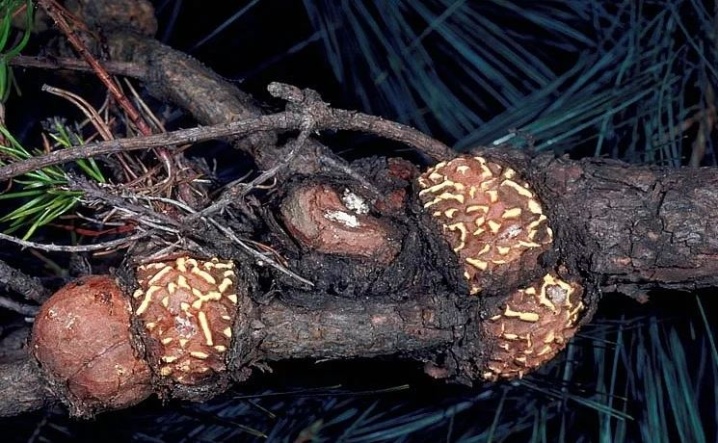
- Aphids and pine hermes. They both belong to the same family, especially dangerous for young shoots and needles. The appearance of white bloom on the branches, yellowing and wilting of the needles testifies to the defeat of the pest. The affected shoots are cut off, the tree is treated with tobacco leaf infusion or soapy water, karbofos.

Possible problems
In the process of growing cedars, you should pay attention to the general condition of the tree. If his bark has peeled off, you need to carefully examine the site of damage. The tree may have served as animal feed during the winter. Besides, drying and falling of scales may indicate the death of the plant, especially if it is accompanied by a change in color and falling of needles... Cracking of the bark may indicate oversaturation of the plant with moisture. Frequent loosening of the soil will help to enhance its evaporation. It is worth checking the root collar - it rots when too deep.
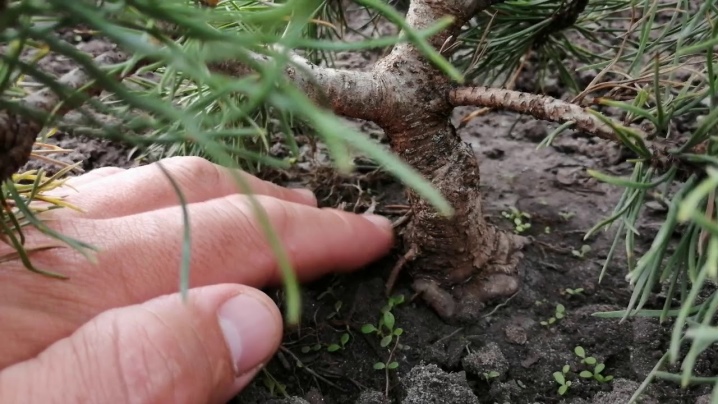
But the yellowing of a part of the needles may not be a cause for alarm. On average, cedar needles live only 2 years, after this time it dies and falls off. If the change is accompanied by the formation of orange mushroom spores, antifungal treatment of the tree will be required. Copper fungicides give good results.
Examples in landscape design
- Cedar tree planted in a ceramic garden container. The dwarf form looks compact and has a lush pyramidal crown.

- Cedar as part of the general landscape. A solitary planting surrounded by a well-groomed lawn focuses on the unusual multi-tiered crown shape of the ephedra.
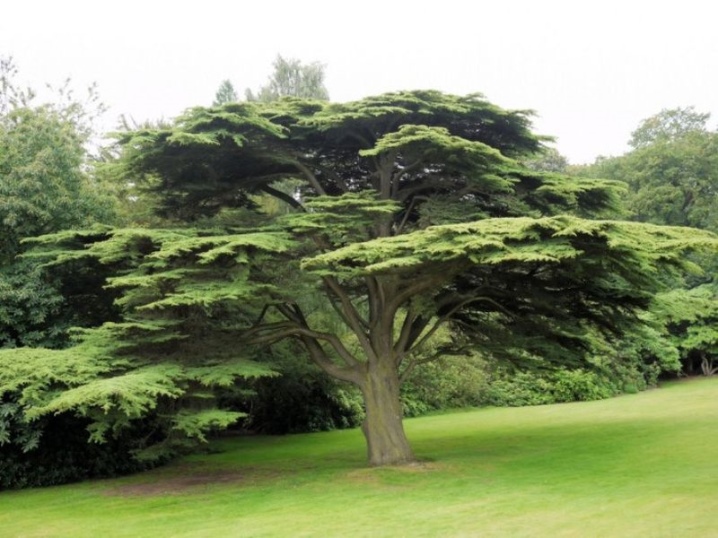
- Cedar in natural habitat. If a park or a walking trail in a rocky area is landscaped, the majestic trees will look very impressive.
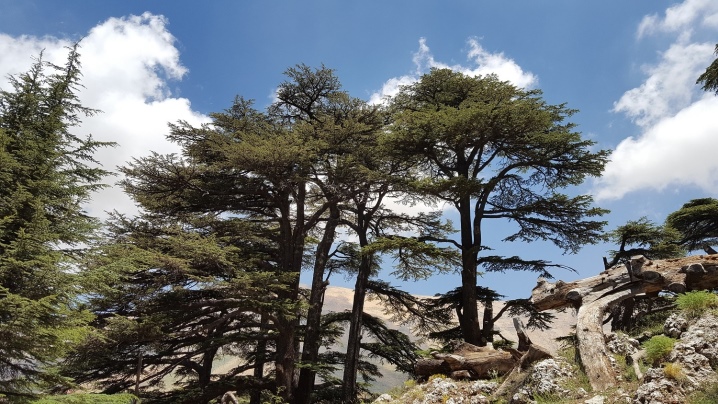
For information on how to properly plant a cedar, see the next video.



































































The comment was sent successfully.